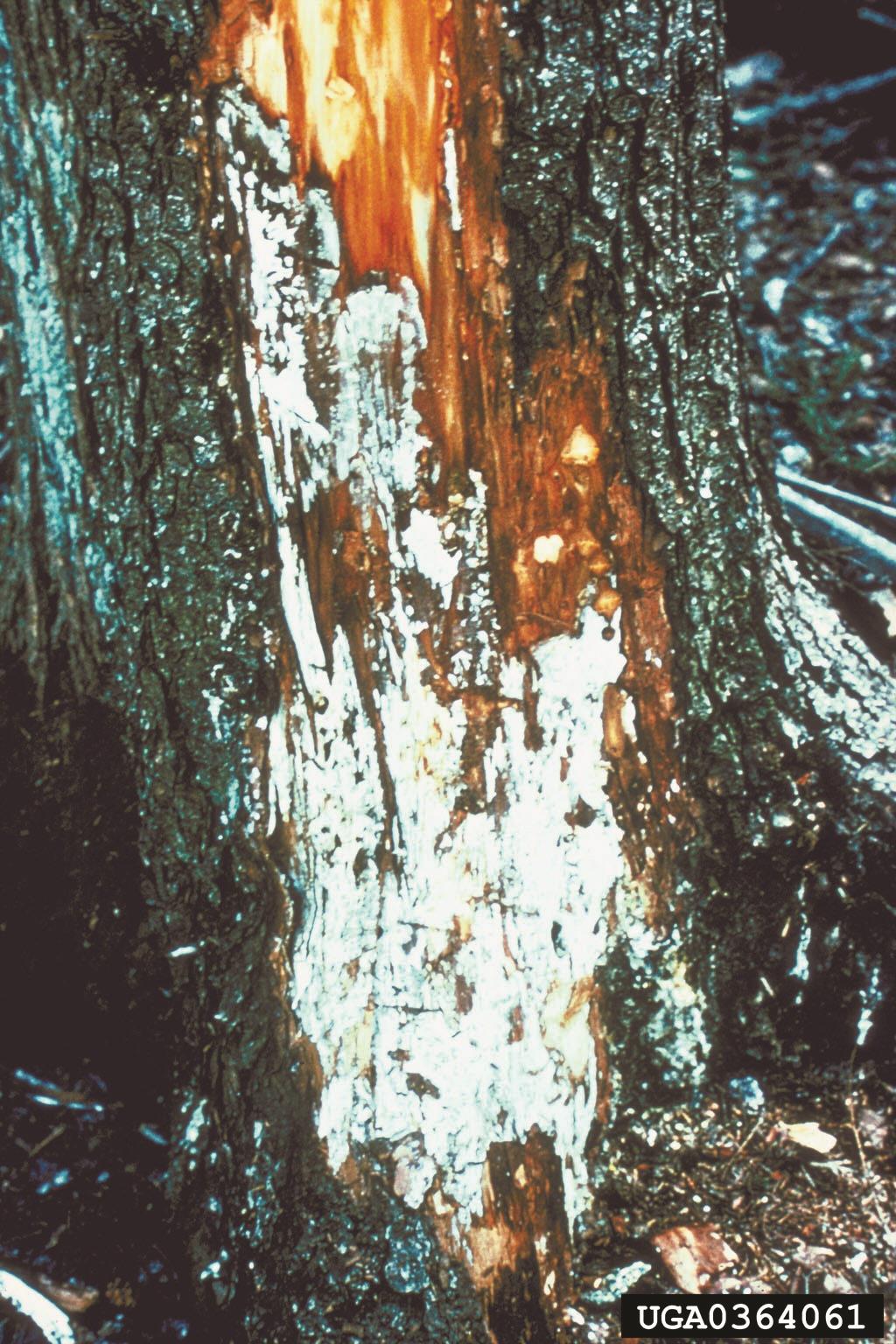Disease Gallery
Disease Details
Armillaria Root Rot
Armillaria mellea
Old forested areas or new orchard sites where trees grew previously may be at risk. Most obvious in late summer when tree may completely collapse. Trees infected with Armillaria can have reduced growth, rapid mortality, wood decay (white rot), and susceptibility to windthrow. Armillaria species contribute to tree decline by the interaction with other factors such as site, tree age, drought, insects, etc.
Fungus spreads from tree to tree through root contact. Fungus can survive for years on dead roots and old stumps in soil. Fungal mats occur near soil line under the bark. Fungus also produces mushroom fruiting bodies in clumps and dark, string-like fungal tissue. The fungus spreads from tree to tree through roots, and via rhizomorphs [a thick strand of organized hyphae (tubular cell array) resembling a fine root] which infect intact bark. These fungi produce a honey-colored mushroom around the base of the tree in late summer or fall during moist periods
Stunted shoots, yellow or red leaves, wilting and premature defoliation. Fungal mats occur near soil line under the bark. Distinct mushroom odor when infected tissues are moist.
